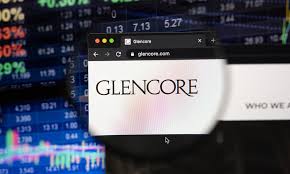Glencore’s Commodity Trading Fraud Scheme (Part IV of V)

Glencore’s settlement with DOJ and the CFTC revealed a plethora of manipulative, deceptive and corrupt conduct, which spanned from at least 2007 to 2018 and occurred in the United States and global oil markets, including manipulation of four U.S. based S&P Global Platts physical oil benchmarks and related futures and swaps.
From 2007 to 2018, Glencore sought to increase profits from physical and derivative oil products by manipulating U.S. pricing benchmarks related to physical fuel oil products and related futures and swaps. On numerous occasions, Glencore engaged in a scheme to manipulate Platts price benchmarks connected to four fuel oil products and associated derivatives in three separate U.S. geographic markets.
Glencore is one of the world’s largest commodity traders and a major player in the oil derivatives markets. Glencore often engaged in physical trading of large oil cargos of fuel oil, as well as smaller trades of bunker fuels, typically with ship owners and other end users.

On numerous occasions, Glencore engaged in fuel oil cargo trades with a Mexico-based state-owned entity for delivery to the Los Angeles market. More than 100 fuel oil trades with the SOE were priced by reference to the Platts Los Angeles Bunker Benchmark, typically the average of the daily benchmark on specified days, plus or minus a specified dollar amount agreed to by the parties. Platts regularly reported the daily Los Angeles Bunker Benchmark.
On days in which fuel oil cargo prices were set, Glencore had significant exposure to the Los Angeles Bunker Benchmark. Between 2012 and 2016, Glencore and the SOE entered into a coordinated, informal “joint venture” by which: (a) the SOE purchased fuel oil cargos from a counterparty priced by reference to the LA Bunker Benchmark on specified pricing days; (b) Glencore sold to the SOE “cutter stock” for blending with fuel oil obtained through the JV; and (c) the SOE would sell the resulting blend to the Singapore market. Glencore and the SOE coordinated the planning and sharing of profits of the venture. As a result, Glencore had an incentive to lower its price for the fuel oil cargo to increase its profits.
in the US Gulf Coast and New York harbor markets, Glencore engaged in derivative trading such as futures and swaps that settled based on the average daily benchmark assessment for a given month or portion thereof. Glencore had significant exposure in physical and derivative markets to the relevant benchmarks, and Glencore traders sometimes increased their positions in derivatives to amplify their exposure and potential profits from manipulating the benchmarks.
During the relevant period, Glencore manipulated relevant benchmarks and the derivatives such as swaps and futures that settled to the benchmarks to increase profits or reduce losses. Such trading practices were a regular occurrence and known to and directed by supervisors.

In the Los Angles market, Glencore submitted increasing bids or decreasing bids during the Platts trading window. At times, Glencore submitted misleading, incomplete, “cherrypicked,” or inaccurate information to Platts outside the window, knowing that such information would influence Platts’ assessments. By engaging in such conduct, Glencore artificially increased or decreased Los Angeles Benchmark pricing on pricing days to increase profits.
In the US Gulf Coast and New York harbor fuel oil markets, Glencore engaged in similar conduct during the Platts’ trading window designed to increase or decrease relevant pricing benchmarks depending on the nature of the specific transactions. Glencore earned millions of dollars in additional profits or savings from such manipulative conduct.
The CFTC Settlement Order cited several specific examples of such conduct.
In Los Angeles, for example, Glencore entered into a cargo trade for the sale of 40,000 metric tons of fuel oil to the SOE, which was priced by reference to to the average LA Bunker Benchmark on May 28, 29 and 30, 2013. A Glencore trader directed an employee to submit bids to Platts during the three-day window to increase the prices of those bids. The employee did so 27 times on May 28, 23 times on May 29 and 8 times on May 30, 2013. This activity led to an artificial LA Bunker Benchmark on each day that was significantly higher than the day’s starting peg and benefited Glencore’s position.

In October 2015, Glencore entered into two cargo trades consisting of the purchase of 40,000 metric tons of fuel oil from the SOE. Both trades were priced with reference to the average daily LA Bunker Benchmark on October 23, 26 and 27, 2015. A Glencore trader directed an employee to submit offers during the Platts window to decrease the prices. The employee did so and this resulted in a lower price than the day’s starting peg to the benefit of Glencore’s positions.
In the USGC, around November 2012, Glencore had long exposure to the average daily Platts USGC HSFO Benchmark for the month in excess of 8,800,000 barrels. The exposure was the result of physical trades and derivative positions. To benefit that exposure, Glencore traders reported bids and raised bids to Platts approximately 728 times that month and reported approximately 59 cargo purchases. Glencore raised the Platts benchmark by .83 per barrel, resulting in increased profits.
















1 Response
[…] Source link […]